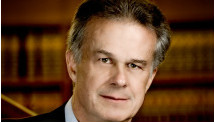Even babies as young as a year-and-a-half can guess what other people are thinking, new research suggests.
The results, published today (Jan. 29) in the journal Proceedings of the Royal Society: B, come from a study of children spanning the globe, from rural China to the more remote islands of Fiji. Previously, scientists thought this ability to understand other people’s perspectives emerged much later in children.
The findings may shed light on the social abilities that differentiate us from our closest living relatives, chimpanzees, said study author H. Clark Barrett, an anthropologist at the University of California, Los Angeles. The study used a form of the false-belief test, one of the few cognitive tasks that young children, but not primates, can do.
Humans are “very good at inferring other people’s mental states: their emotions, their desires and, in this case, their knowledge,” Barrett said. “So it could play an important role in cultural transmission and social learning.” [That's Incredible! 9 Brainy Baby Abilities]
Classic test
In the classic test of children’s understanding called the false-belief task, one person comes into a room and puts an object (such as a pair of scissors) into a hiding place. A second person then comes in and puts the scissors into his pocket, unbeknownst to the first individual. When that first person returns, someone will ask the child, “Where do you think the first person will look for the scissors?”
The task is tricky because the children need to have a theory of mind, or an ability to understand other people’s perspectives, in this case that of the individual who didn’t see the scissors being retrieved by another.
By ages 4 to 7, most children in Western countries can answer that the first person will look in the original hiding place, because the individual doesn’t know the scissors have moved. But children across the globe tend to give that answer at different ages.
However, past work showed that if researchers don’t ask babies the question, but instead follow the infants’ eye movements, the children seem to understand the concept much earlier. Barrett and his colleagues wondered whether cultural differences in dealing with adults could be obscuring the amazing cognitive leap children were taking.
Universal understanding
To find out, the researchers studied almost all of the available children in three communities in China, Fiji and Ecuador from ages 19 months to about 5 years (about 91 children in total).
The team created a live-action play with a very similar set-up to the classic false-belief test: A man leaves some scissors hidden in a box, while another person comes in and puts them into his pocket.
During the play, as he is pocketing the scissors, the second person pauses, “chin in hand, looking at the ceiling and says, ‘Hmm, I wonder where they’ll look for the scissors,’” Barrett told LiveScience.
The researchers then video recorded the children’s reactions to the play.
The youngsters consistently looked at the box, showing that the little ones expected the first man to search for the scissors where he had left them. Understanding what the first person believes, and also what he doesn’t know, required the children to make sophisticated inferences about other people’s knowledge.
Early development
The findings show that children develop this mind-reading ability of sorts years earlier than previously thought, and that this development looks the same across many different cultures.
The finding suggests that the skill itself is universal and that other cultural differences may have muddied previous experiments.
For instance, in many societies, parents don’t make a habit of asking children rhetorical questions like, “What is the cow doing?” when the adults already know the answer.
Children in those cultures may be confused by those questions and might think, “Why are you asking me, you should know it?” Barrett said.
Follow LiveScience on Twitter @livescience. We’re also on Facebook & Google+.
Copyright 2013 LiveScience, a TechMediaNetwork company. All rights reserved. This material may not be published, broadcast, rewritten or redistributed.
Science News Headlines – Yahoo! News
Title Post: Babies Start ‘Mind Reading’ Earlier Than Thought
Url Post: http://www.news.fluser.com/babies-start-mind-reading-earlier-than-thought/
Link To Post : Babies Start ‘Mind Reading’ Earlier Than Thought
Rating:
100%
based on 99998 ratings.
5 user reviews.
Author:
Thanks for visiting the blog, If any criticism and suggestions please leave a comment


